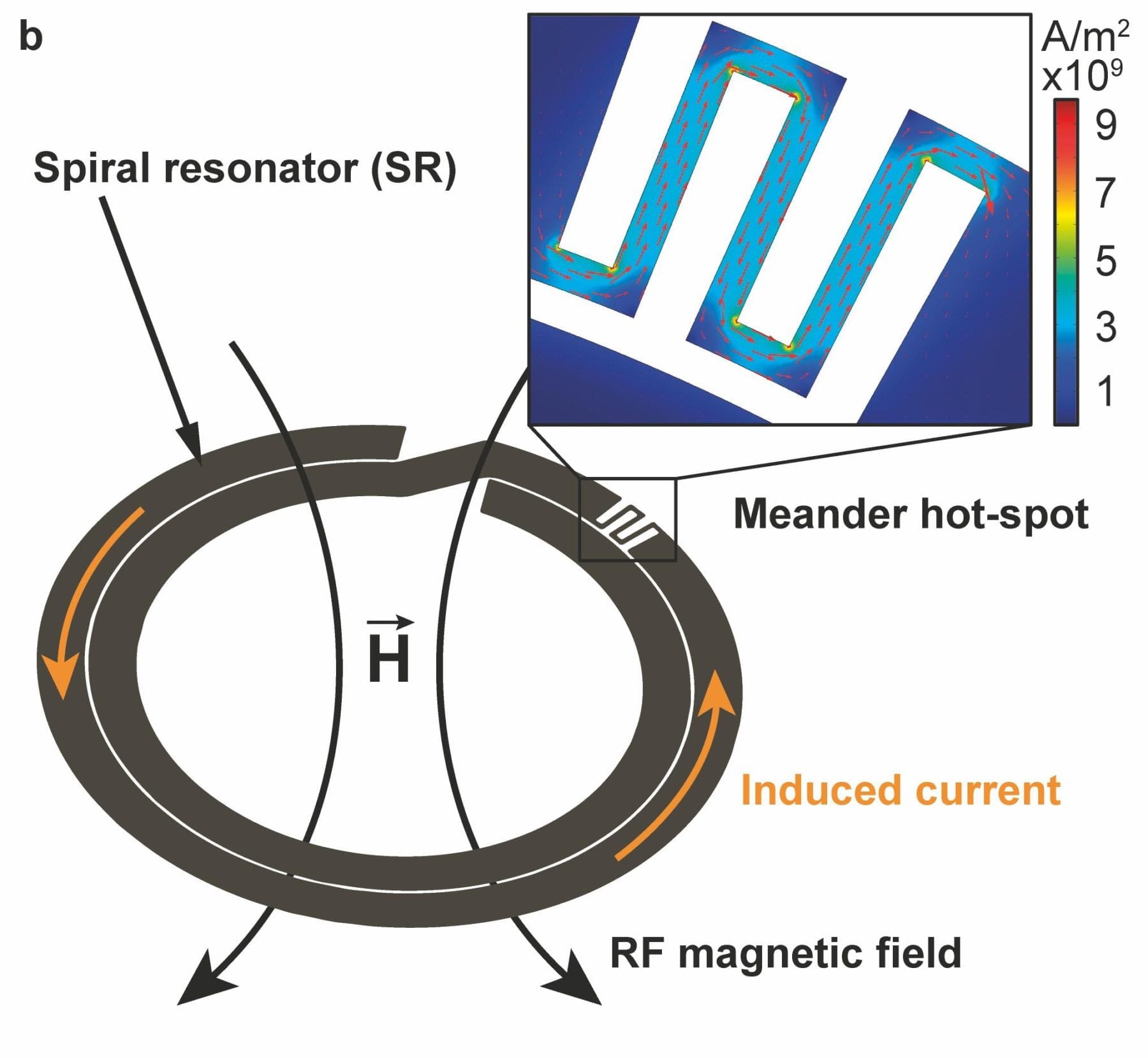
EPFL researchers have developed biodegradable microresonators that can be heated locally with a wireless system. Doctors could soon be using them in implants to control the release of painkillers within tissue.
Patients fitted with an orthopedic prosthetic commonly experience a period of intense pain after surgery. In an effort to control the pain, surgeons inject painkillers into the tissue during the operation. When that wears off a day or two later, the patients are given morphine through a catheter placed near the spine. Yet catheters are not particularly comfortable, and the drugs spread throughout the body, affecting all organs.
Researchers in EPFL’s Microsystems Laboratory at the School of Engineering are now working on a biodegradable implant that would release a local anesthetic on-demand over several days. Not only would this implant reduce patients’ post-op discomfort, but there would be no need for further surgery to remove it. They developed a tiny biodegradable electronic circuit, made from magnesium, that could be heated wirelessly from outside the body.
Once integrated into the final device, the circuit will allow to release controlled amounts of anesthetic in a specific location over several days. After that, the implant will degrade safely inside the body. This research has been published in Advanced Functional Materials.
One capsule with several reservoirs
The electronic circuit – a resonant circuit in the shape of a small spiral – is just a few microns thick. When exposed to an alternating electromagnetic field, the spiral resonator produces an electric current that creates heat.
The researchers’ end-goal is to pair the resonators with painkiller-filled capsules and then insert them into the tissue during surgery. The contents of the capsules could be released when an electromagnetic field sent from outside the body melts the capsule membrane.
“We’re at a key stage in our project, because we can now fabricate resonators that work at different wavelengths,” says Matthieu Rüegg, a PhD student and the study’s lead author. “That means we could release the contents of the capsules individually by selecting different frequencies.” The heat-and-release process should take less than a second.
A novel manufacturing technique
The researchers had to get creative when it came time to manufacture their biodegradable resonators. “We immediately ruled out any fabrication process that involved contact with water, since magnesium dissolves in just a few seconds,” says Rüegg. They ended up shaping the magnesium by depositing it on a substrate and then showering it with ions. “That gave us more flexibility in the design stage,” he adds. They were eventually able to create some of the smallest magnesium resonators in the world: two microns thick, with a diameter of three millimeters.
The team’s invention is not quite ready for the operating room. “We still need to work on integrating the resonators into the final device and show that it’s possible to release drugs both in vitroand in vivo,” concludes Rüegg.
Learn more: Tiny biodegradable circuits for releasing painkillers inside the body
The Latest on: Biodegradable microresonators
[google_news title=”” keyword=”biodegradable microresonators” num_posts=”10″ blurb_length=”0″ show_thumb=”left”]
via Google News
The Latest on: Biodegradable microresonators
- Microresonators articles from across Nature Portfolioon April 30, 2024 at 5:00 pm
Microresonators are micrometre-scale structures for confining light. Light is reflected internally at the edges of the resonator. This creates a series of standing-wave optical modes, or ...
- Do You Really Need Compostable Bags for Your Food Scraps?on April 21, 2024 at 4:25 pm
Updated April 12, 2024 Rose Maura Lorre Share this post If you save food scraps for composting, lining your kitchen collection bin with a bag labeled as compostable or biodegradable may seem like ...
- This chic furniture is almost entirely biodegradableon April 20, 2024 at 4:35 am
Except for the 94% recycled steel used for its frames, everything in Mater’s new Alden collection is fully biodegradable. The sustainable Danish design company worked with Spanish architect and ...
- Biodegradable and Eco-Friendly Materialson April 8, 2024 at 8:31 am
Welcome! Today, we're diving into the world of biodegradable and eco-friendly materials. Get ready to explore sustainable solutions that are kind to both the planet and your pocket with a sprinkle ...
- A certified biodegradable alternative to plastic from Japanon April 3, 2023 at 11:19 am
This website provides additional information about the claims in the video titled: “A certified biodegradable alternative to plastic from Japan”. A company in Japan called Kaneka has developed ...
- MycelioTronics: Biodegradable Electronics Substrates From Fungion January 6, 2023 at 4:04 am
Maintaining performance of ICs and other electronic components in a device while making them biodegradable or recyclable has proved difficult so far. The substrate is the second largest ...
- Five amazing biodegradable inventions that could potentially replace plasticon September 30, 2020 at 3:39 am
We hear the word 'biodegradable' a lot - from teabags to toiletries, many products are starting to go zero-waste to reduce plastic. But what does it actually mean? When something is ...
- SWOT Analysis for Biodegradable Packagingon August 16, 2020 at 9:53 am
Manufacturing biodegradable packaging forms the foundation of what looks to be a growing industry. But manufacturing the product is only part of the equation, and a SWOT analysis can help you make ...
- How to make biodegradable 'plastic' from cactus juiceon June 2, 2019 at 5:00 pm
She says it's not toxic and is biodegradable. A film by Tom Heyden for People Fixing the World. How the late inventor of cat's eyes, Percy Shaw, got his eureka moment. Restaurants in New Orleans ...
- Ask Hackaday: Is PLA Biodegradable?on March 7, 2016 at 8:35 pm
Being derived from natural materials, PLA is marketed as being biodegradable. You don’t need to worry about low-poly Pokemon and other plastic trinkets filling landfills when you’re printing ...
via Bing News










